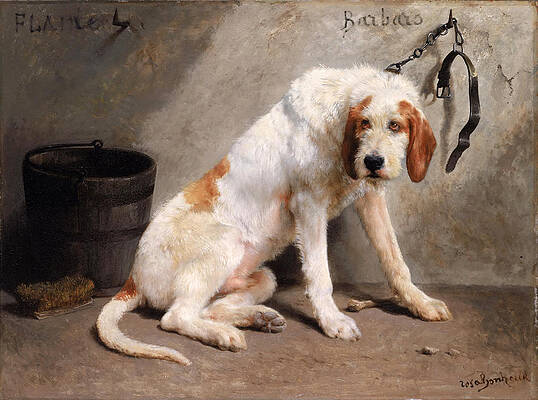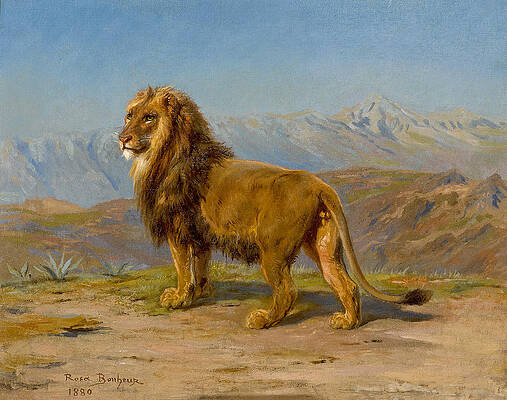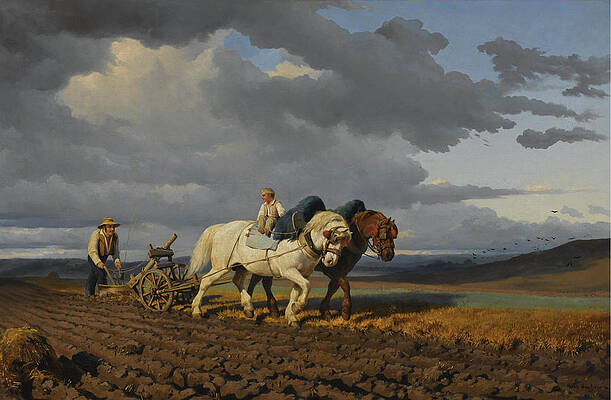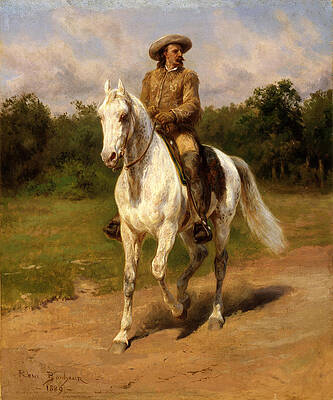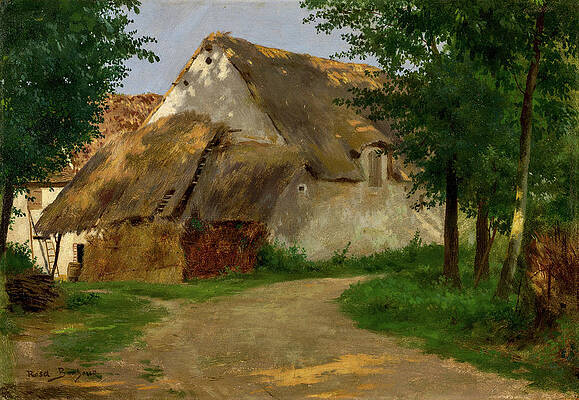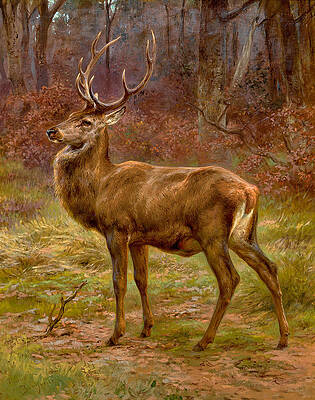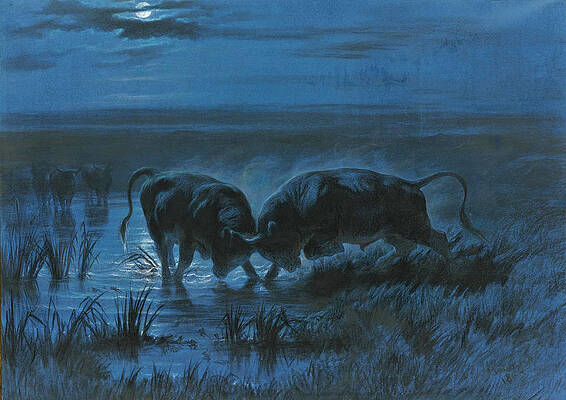Rosa Bonheur
Paintings
The Horse Fair
Highland Raid
Martin, a Terrier
Barbaro after the Hunt
Lion head
Mounted Indians Carrying Spears
A shepherdess with a goat and two cows in a meadow
A Pony and a Donkey in a Mountain Landscape
A Ghillie and two Shetland Ponies in a misty Landscape
The King watches
Lion in a Mountainous Landscape
Ploughing
Ploughing in Nevers
Royal Tiger Marching
Changing of meadow
The Monarch of the herd
Buffalo Bill
A Limier Briquet Hound
The Farm at the Entrance of the Wood
Wild Cat
Head of a Calf
Trotting a Horse
Weaning the Calves
Cattle at Rest on a Hillside in the Alps
Oxen plowing
King of the Herd
A Grey Horse. At the Horse Fair
The Wounded Eagle
Ploughing Scene
Grazing Horses
Lioness Posing
Four Boars in a Landscape
Stag in an Autumn Landscape
Portrait of a Mastiff-Labrador in a Landscape
Recumbent Stag
Moonlight Battle
Tiger in a mountain landscape
Fine Art Prints | Greeting Cards | Phone Cases | Lifestyle | Face Masks | Men's , Women' Apparel | Home Decor | jigsaw puzzles | Notebooks | Tapestries | ...
The Horse Fair
Rosa Bonheur, born Marie-Rosalie Bonheur, (16 March 1822 – 25 May 1899) was a French animalière, realist artist, and sculptor. As a painter she became famous primarily for two chief works: Ploughing in the Nivernais (in French: Le labourage nivernais, le sombrage), which was first exhibited at the Salon of 1848, and is now in the Musée d’Orsay in Paris, depicts a team of oxen ploughing a field while attended by peasants set against a vast pastoral landscape; and, The Horse Fair (in French: Le marché aux chevaux) (which was exhibited at the Salon of 1853 (finished in 1855) and is now in the Metropolitan Museum of Art, in New York City. Bonheur is widely considered to have been the most famous female painter of the nineteenth century.
Rosa Bonheur, Anna Elizabeth Klumpke
Early development and artistic training
Bonheur was born in Bordeaux, Gironde, the oldest child in a family of artists. Her father Oscar-Raymond Bonheur was a landscape and portrait painter who became a friend of Francisco Goya when Goya was living in exile in Bordeaux in the 1820s. Oscar-Raymond was an early adherent of Saint-Simonianism, a Christian-socialist sect that promoted the education of women alongside men. The Saint-Simonians also prophesied the coming of a female messiah. Her mother Sophie (née Marquis) who died when Rosa Bonheur was only eleven, had been a piano teacher. Bonheur's younger siblings included the animal painters Auguste Bonheur and Juliette Bonheur and the animal sculptor Isidore Jules Bonheur. That the Bonheur family was renowned as a family of artists is attested to by the fact that Francis Galton, the cousin of Charles Darwin, used the Bonheurs as an example of "Hereditary Genius" in his 1869 essay of the same title.[4]
Rosa Bonheur's atelier in Château de By, Thomery, is a museum showing the place where she worked during the last 40 years of her life.[5]
Bonheur moved to Paris in 1828 at the age of six with her mother and brothers, her father having gone ahead of them to establish a residence and income. By family accounts, she had been an unruly child and had a difficult time learning to read. However even before she could talk she would sketch for hours at a time with pencil and paper.[6] To remedy this her mother taught her to read and write by having her select and draw an animal for each letter of the alphabet.[7] To this practice in the company of her doting mother she attributed her love of drawing animals.
Although she was sent to school like her brothers, she was a disruptive force in the classroom and expelled from numerous schools.[8] Finally, after trying to apprentice her to a seamstress Raimond agreed to take her education as a painter upon himself. She was twelve at that point and would have been too young to attend the École des Beaux-Arts even if they had accepted women.
As was traditional in the art schools of the period, Bonheur began her artistic training by copying images from drawing books and by sketching from plaster models. As her training progressed she began to make studies of domesticated animals from life, to include horses, sheep, cows, goats, rabbits and other animals in the pastures on the perimeter of Paris, the open fields of Villiers near Levallois-Perret and the (then) still-wild Bois de Boulogne. At age fourteen she began to copy from paintings at the Louvre. Among her favorite painters were Nicholas Poussin and Peter Paul Rubens, but she also copied the paintings of Paulus Potter, Frans Pourbus the Younger, Louis Léopold Robert, Salvatore Rosa and Karel Dujardin.[9]
She also studied animal anatomy and osteology by visiting the abattoirs of Paris and by performing dissections of animals at the École nationale vétérinaire d'Alfort, the National Veterinary Institute in Paris.[10] There she prepared detailed studies which she would later use as references for her paintings and sculptures. During this period, too, she also met and became friends with the father and son comparative anatomists and zoologists Étienne Geoffroy Saint-Hilaire and Isidore Geoffroy Saint-Hilaire by whom her father was employed to create natural history illustrations.[11]
Early success
Rosa Bonheur received a French government commission which led to her first great success, Ploughing in the Nivernais, exhibited in 1849. Her most famous work was the monumental Horse Fair, completed in 1855, which measured eight feet high by sixteen feet wide.[12] Its subject is the horse market held in Paris on the tree-lined boulevard de l’Hôpital, near the Pitié-Salpêtrière Hospital, visible in the background on the left. It led to international fame and recognition and that same year she travelled to Scotland, "en route" meeting Queen Victoria, who admired her work, and where she completed sketches for later works including A Scottish Raid, completed in 1860, and Highland Shepherd. These were anachronistic pieces as they depicted a way of life in the Scottish highlands that had disappeared a century earlier. Nonetheless, they had enormous appeal to Victorian sensibilities. She was especially popular in England, though less so in her native France. In France she was decorated with the Legion of Honour by the Empress Eugénie in 1865 and was promoted to Officer of the order in 1894.[13]
Patronage and the market for her work
She was represented by private art galleries, and in particular that of Ernest Gambart (1814–1902), who would purchase the reproduction rights to her work and sell engraved copies of her paintings. It was Gambart who brought Bonheur to the United Kingdom in 1855.[14] Many engravings were created by Charles George Lewis (1808–1880), one of the finest engravers of his day. Gambart sold through his gallery in London's Pall Mall.
Legacy
At the time that Bonheur became an artist, women generally were only reluctantly given opportunities for education as artists. She represented a "New Woman" of the 19th century, with liberal sexual ideas and by becoming a successful artist, showed what she "could do in the matter of energy, continuity of purpose, methodical and intelligent labor, and, in a word, in that indispensable quality, inspiration, which gives an impetus to art."[15]
Artwork made by women was considered to be inferior, and to help overcome that stereotype, the women artists became "increasingly vocal and confident" in promoting women's artist's work, and thus became part of the emerging image of the educated, modern and freer "New Woman".[16]
Bonheur was known for wearing men's clothing, her choice of companions and her penchant for smoking cigarettes.[17] On her wearing of trousers, she said at the time that her choice of attire was simply practical as it facilitated her work with animals: "I was forced to recognize that the clothing of my sex was a constant bother. That is why I decided to solicit the authorization to wear men's clothing from the prefect of police. But the suit I wear is my work attire, and nothing else. The epithets of imbeciles have never bothered me...." [18] She lived for over forty years with her childhood friend Nathalie Micas. In the final year of her life she became close with Anna Klumpke, the author of her "autobiography".
She died at the age of 77, at Thomery (By), France. Many of her paintings, which had not previously been shown publicly, were sold at auction in Paris in 1900.[19] One of her works, Monarchs of the Forest, sold at auction in 2008 for just over US$200,000.[20]
Biographical works
Photograph of Rosa Bonheur (1880-90) in the garden of her Château at By
While there are many sources of biographical information about Rosa Bonheur, there are three primary texts which are most consulted and cited in the subsequent literature; the first is a pamphlet written by Eugène de Mirecourt, Les Contemporains: Rosa Bonheur which appeared in 1856 just after her Salon success with The Horse Fair.[21]
When, in 1897, Venancio Deslandes came across a copy of this pamphlet he sent it to Bonheur with a request that she might tell him if it were accurate.[22] This document, corrected and annotated by Rosa Bonheur herself is a key primary biographical source. The second account was written by Anna Klumpke, an American painter from Boston who made Bonheur’s acquaintance in 1887 while serving as a translator for an American collector of her work and who later became the older artist’s companion in the last year of her life. This account, published in 1909 as Rosa Bonheur: sa vie, son oeuvre was translated in 1997 by Gretchen Van Slyke and published as Rosa Bonheur: The Artist's (Auto)biography, so-named because Klumpke had used Bonheur’s first-person voice.[23]
Rosa Bonheur, 1865, wearing the Legion of Honour
The third, and most authoritative work is Reminiscences of Rosa Bonheur, edited by Theodore Stanton (the son of Elizabeth Cady Stanton, the American feminist), and published simultaneously in London and New York in 1910. This volume includes numerous correspondences between Bonheur and her family and friends, subsequently lending the deepest insight into the artist’s life, as well as her understanding of her own art-making practices and the art world in general. The volume is arranged in a loosely chronological fashion, except when letters and reviews are grouped by correspondent or critic.[24]
Timeline of works
Ploughing in the Nivernais, 1849
The Horse Fair, 1852–55
The Highland Shepherd, 1859
Changing of meadow, 1868
The Monarch of the herd, 1868
Muletiers espagnols traversent les Pyrénées, 1875
Weaning the Calves, 1879
Relay Hunting, 1887
Portrait de Col. William F. Cody, 1889
Notes
The following footnotes cite references, below.
"Musée d'Orsay: Rosa Bonheur Labourage nivernais". musee-orsay.fr. 25 March 2009.
Rosa Bonheur, The Horse Fair, Metropolitan Museum of Art
Janson, H. W., Janson, Anthony F. History of Art. Harry N. Abrams, Inc., Publishers. 6th edition. ISBN 0-13-182895-9, page 674.
Galton, Francis. Hereditary Genius: An Inquiry into its Laws and Consequences. Second edition. (London: MacMillan and Co, 1892), p. 247. Original 1869.
"Le site du village de Thomery 77810". free.fr.
Mackay, James, The Animaliers, E.P. Dutton, Inc., New York, 1973
Rosalia Shriver, Rosa Bonheur: With a Checklist of Works in American Collections (Philadelphia: Art Alliance Press, 1982) 2-12. (It must be said that, as a reference source this book is itself riddled with inaccuracies and mis-attributions but it accords with the consensus account on this matter.)
Theodore Stanton, Reminiscences of Rosa Bonheur (New York: D. Appleton and company, 1910), Theodore Stanton, Reminiscences of Rosa Bonheur (London: Andrew Melrose, 1910).
Boime, Albert. "The Case of Rosa Bonheur: Why Should a Woman Want to be More Like a Man?", Art History v. 4, December 1981, p. 384-409.
Wild Spirit: The Work of Rosa Bonheur by Jen Longshaw
Ashton, Dore and Denise Browne Hare. Rosa Bonheur: A Life and a Legend, (New York: Viking, 1981, 206pp.
The Horse Fair at Albright Knox Gallery, sketch for the London version; the sketch for the New York version is in the Ludwig Nissen Foundation, see: C. Steckner, in: Bilder aus der Neuen und Alten Welt. Die Sammlung des Diamantenhändlers Ludwig Nissen (de), 1993, p. 142 and spaeth.net
"Base Léonore, recensement des récipiendaires de la Légion d’honneur". culture.gouv.fr.
"Ernest Gambart". goodallartists.ca.
Stanton, Theodore (1910). Reminiscences of Rosa Bonheur (with twenty-four full-page illustrations and fifteen line drawings in the text. A. Melrose. p. 64.
Prieto, Laura R. (2001). At Home in the Studio: The Professionalization of Women Artists in America. Harvard University Press. pp. 145–146. ISBN 978-0-674-00486-3.
See, for instance, Britta C. Dwyer, “Bridging the gap of difference: Anna Klumpke's “union” with Rosa Bonheur”, Out of context. (New York: Greenwood Press, 2004), p. 69-79.; Laurel Lampela, “Daring to be different: a look at three lesbian artists”, Art Education v.54 no. 2 (March 2001), p. 45-51. and Gretchen Van Slyke, “The sexual and textual politics of dress: Rosa Bonheur and her cross-dressing permits”, Nineteenth-Century French Studies v. 26 no. 3-4 (Spring/Summer 1998) p. 321-35.
Janson: History of Art, page 929
Chisholm, Hugh, ed. (1911). "Bonheur, Rosa". Encyclopædia Britannica (11th ed.). Cambridge University Press.
Christie's. "Rosa Bonheur (French, 1822-1899)". christies.com.
Eugène de Mirecourt, Les Contemporains: Rosa Bonheur (Paris: Gustave Havard, 15 Rue Guénégaud, 1856) 20.
Venancio Deslandes was the former head of the National Printing Office of Lisbon.
Anna Klumpke, Rosa Bonheur: Sa Vie, Son Oeuvre, (Paris: E. Flammarion, 1909), Anna Klumpke, Rosa Bonheur: The Artist's (Auto)Biography, trans. Gretchen Van Slyke (Ann Arbor: University of Michigan Press, 1998).
Theodore Stanton, Reminiscences of Rosa Bonheur, (New York: D. Appleton and company, 1910), Theodore Stanton, Reminiscences of Rosa Bonheur, (London: Andrew Melrose, 1910).
References
NMWA.org Collection Profile - Bonheur article and artwork at NMWA.
Further reading
Dore Ashton, Rosa Bonheur: A Life and a Legend. Illustrations and Captions by Denise Browne Harethe. New York: A Studio Book/The Viking Press, 1981 NYT Review
Artist
A - B - C - D - E - F - G - H - I - J - K - L - M -
N - O - P - Q - R - S - T - U - V - W - X - Y - Z
Retrieved from "http://en.wikipedia.org/"
All text is available under the terms of the GNU Free Documentation License





